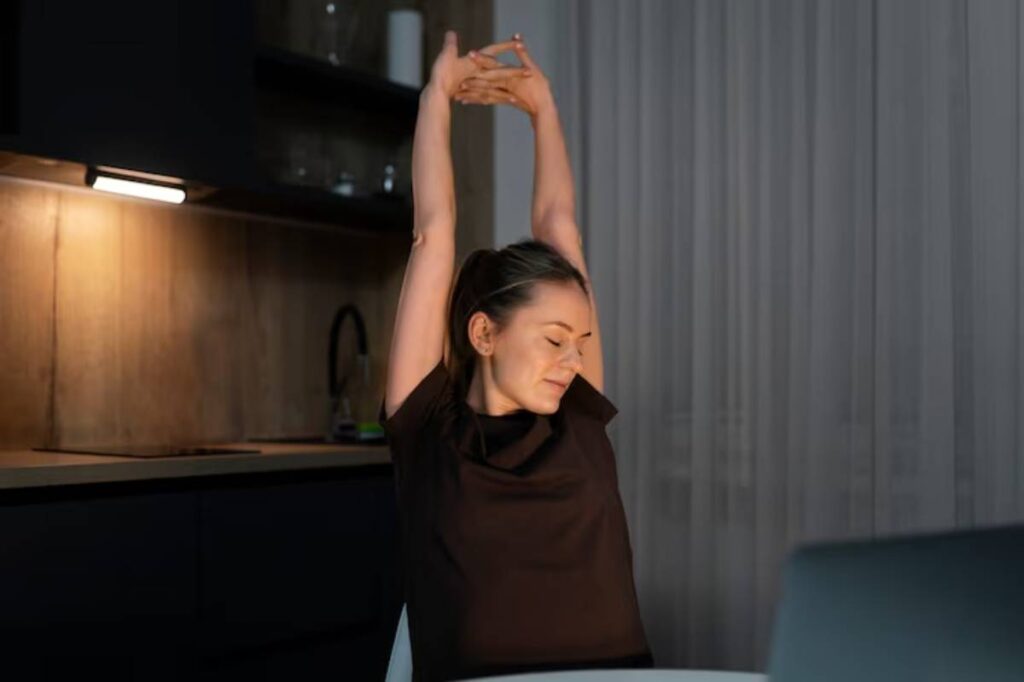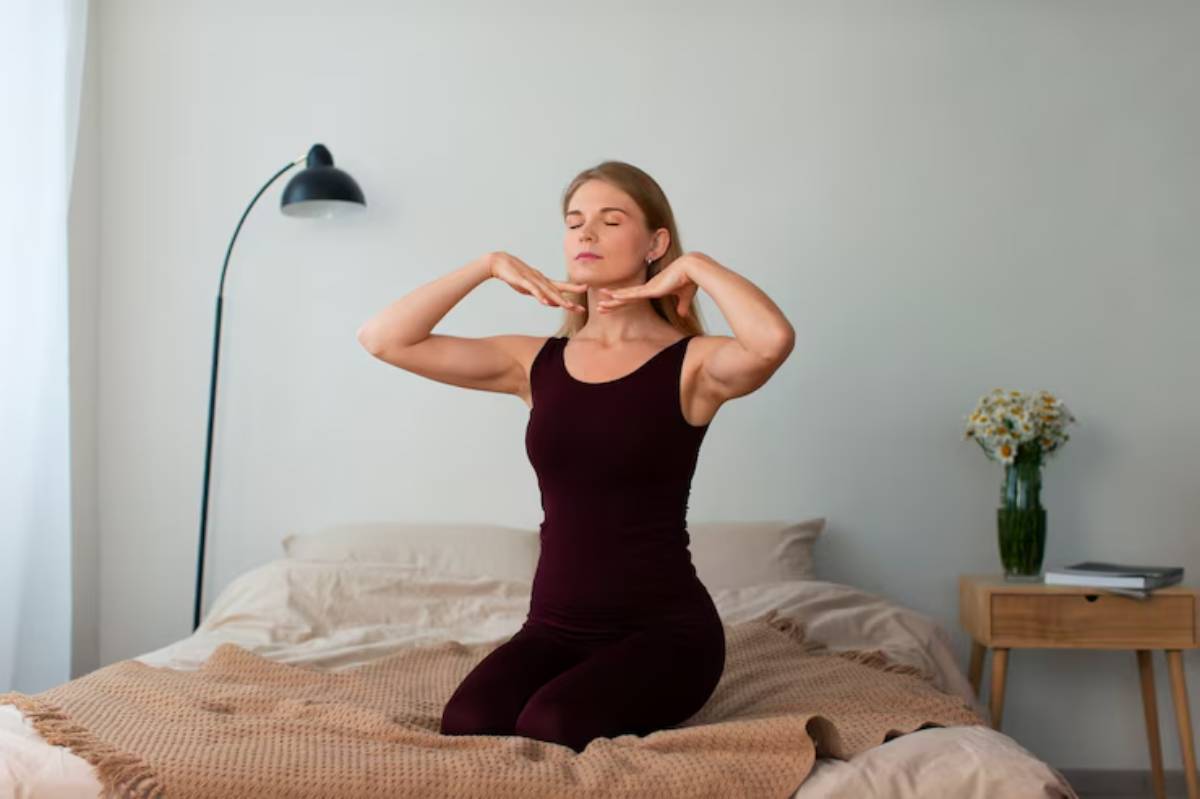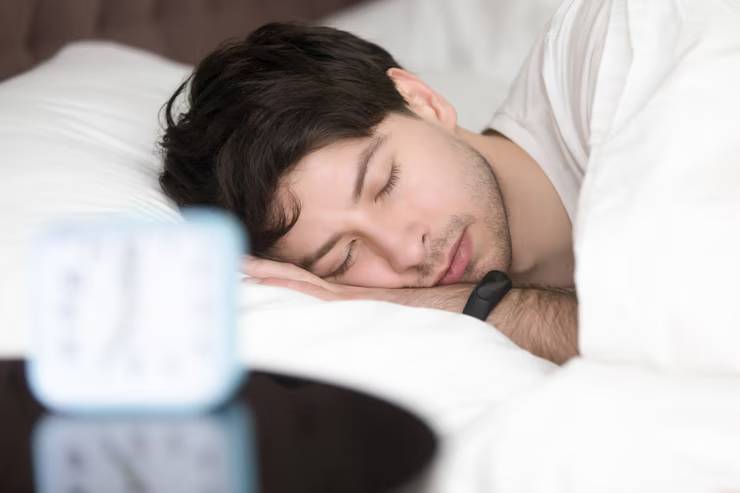The Health Blog

Progressive Muscle Relaxation for Insomnia Relief
It’s bedtime. The room is dark. Everything’s quiet. But the body? Tense. Shoulders feel tight. The jaw clenches without realising. Legs twitch or feel restless. Sleep stays just out of reach.
Sometimes, it’s not just a busy mind that keeps people awake — it’s a wired, wound-up body that hasn’t gotten the message that the day is over.
That’s where progressive muscle relaxation comes in. This simple, body-based practice helps signal to both body and brain: It’s time to rest now.
It might seem like just another method, but for those struggling with insomnia, this gentle muscle relaxation sleep aid can be a game changer. It offers a natural and steady way to help you relax into deeper, better sleep.
What Is Progressive Muscle Relaxation?

Progressive Muscle Relaxation (PMR) is a practice developed in the 1930s by Dr. Edmund Jacobson. The idea is simple: tense and then relax each muscle group in the body, one by one.
It’s not just about loosening muscles — it’s about training awareness. Tension often hides in the body. By actively engaging and releasing it, people become more tuned in to where stress lives and how to let it go.
The process brings calm to the nervous system and allows both mind and body to soften — exactly what’s needed when sleep won’t come easily.
How It Supports Better Sleep
Progressive muscle relaxation is one of the most effective insomnia relaxation techniques, and here’s why:
1. Reduces Physical Tension
People often carry stress without realising it — in the neck, back, shoulders, even fingers. Releasing that tightness helps the body shift from “on alert” to “safe to sleep.”
2. Slows the Nervous System
Muscle relaxation, like deep breathing, activates the parasympathetic nervous system. This system helps with rest and recovery. Heart rate slows. Blood pressure lowers. Muscles stop clenching.
3. Redirects the Mind
Focusing on different parts of the body draws attention away from racing thoughts. It gives the mind something steady and gentle to follow.
4. Improves Body Awareness Over Time
The more you practice the technique, the faster your body learns to release stress. This makes it one of the best natural ways to sleep.
Who Can Benefit From It?

Progressive muscle relaxation can be helpful for:
- People with difficulty falling asleep
- Those who wake up during the night and struggle to settle again
- Anyone dealing with anxiety or stress-related sleep issues
- Individuals experiencing physical restlessness or “twitchy” legs in bed
It’s safe for most people, but those with muscle injuries or chronic pain should adapt movements carefully or consult a professional.
How to Practise Progressive Muscle Relaxation
The beauty of PMR is its simplicity. No tools. No tech. Just a quiet space and a few minutes of time.
A Basic Routine Looks Like This:
- Get Comfortable: Lie down in bed or recline somewhere quiet. Let the arms rest by the sides. Close the eyes if that feels comfortable.
- Breathe First: Take a few slow, deep breaths. Inhale through the nose, hold briefly, then exhale through the mouth. Do this three times to settle in.
- Move Through the Body: Start at the feet. Tense each muscle group for 5–7 seconds, then release slowly. Pause for 10–15 seconds before moving on.
Follow this order:
- Feet and toes
- Calves
- Thighs
- Hips and glutes
- Stomach
- Chest
- Hands
- Forearms
- Upper arms
- Shoulders
- Neck and jaw
- Eyes and forehead
- Notice the Difference: Pay attention to how each area feels after relaxing. Let the entire body rest.
- Stay in Stillness: Once the whole body has been relaxed, stay still and breathe gently. Let sleep come naturally if it does — no pressure.
A Sample Script (Use or Record It Yourself)
If self-guiding feels tricky at first, here’s a simple script to read or record and play back:
“Take a deep breath… and let it out slowly. Now focus on your feet. Gently squeeze the muscles in your toes and arches… hold… and release. Notice the difference. Move to your calves. Tense… hold… and release. Feel them soften. Now your thighs… hold the tension… and let it go. Relax your hips… your stomach… your chest. Let each breath flow easily. Tense your hands into fists… hold… and release. Relax your arms, shoulders, neck. Soften your jaw. Unclench the forehead. Let the whole body rest, heavy and still. Breathe… gently… without effort…”
This calming structure guides the body into stillness — a place where sleep feels safe and welcome.
When to Practise It

Before Bed
The most common time is right before sleep. Use it after winding down — once in bed, ready to rest.
During Night-Time Wake-Ups
If waking up in the middle of the night with a busy mind or tense body, try PMR to help settle back in.
During Stressful Moments
Even during the day, this practice can bring down stress levels. It’s not just a muscle relaxation sleep aid — it’s a stress-reduction tool too.
How Often Should It Be Used?
Progressive muscle relaxation can be used as often as needed. Some use it nightly, others only when sleep is disrupted. Over time, the body learns what to expect — and begins relaxing more quickly on cue.
Like most natural sleep methods, consistency is key. It’s less about perfection and more about showing up gently and regularly.
Tips for Success
- Start slow. Begin with a few muscle groups if the full routine feels overwhelming. Add more over time.
- Use audio guides. Many free apps and platforms offer guided PMR tracks. Choose a voice that feels calming.
- Avoid over-tensing. The goal is gentle engagement, not strain. The point is to notice, not stress the muscles.
- Keep the environment calm. Dim the lights, reduce noise, and avoid screens beforehand for best results.
- Pair it with other techniques. Combine PMR with deep breathing, gentle stretching, or aromatherapy for enhanced effect.
A Reminder: Sleep Is a Process, Not a Switch
Insomnia often feels like a nightly battle. But rest isn’t something to fight for — it’s something to prepare for. Progressive muscle relaxation offers a way to do just that.
It doesn’t promise to make sleep perfect. But it does make the body feel safer. Softer. More ready. And in that space, sleep is more likely to return — naturally, without force.
Let the Body Lead
The mind can be loud at night. Thoughts loop. Worries grow. But the body? The body knows how to rest — when it’s given a chance.
With the help of insomnia relaxation techniques like progressive muscle relaxation, the body can send a message to the mind: We’re okay now. Let’s rest.
And over time, that message gets stronger. The nights get easier. The tension fades more quickly. And sleep — real, healing sleep — starts to feel possible again.









